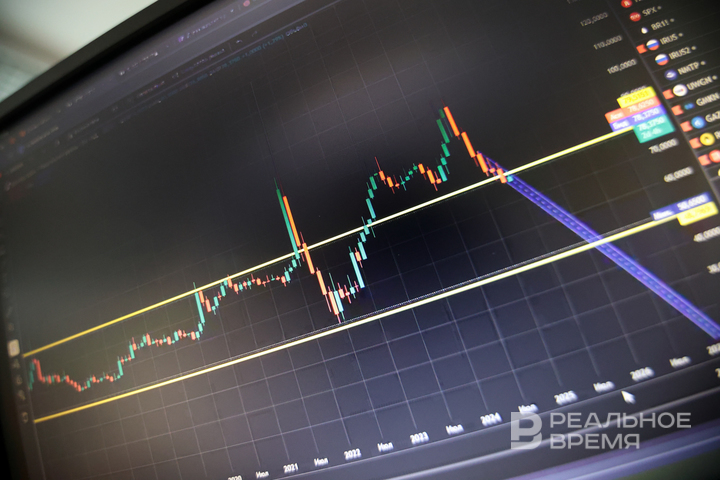JPMorgan and Singaporean regulatory key to banking token revolution

When Wall Street’s largest bank takes an unprecedented step — launching a pilot of its deposit token, JPM Coin (JPMD), on the public Base blockchain (Coinbase) — it signals more than just a technological experiment. In his research, digital economist Ravil Akhtyamov identifies a critically important detail: the project’s key architect is a former employee of the Monetary Authority of Singapore (MAS), who spent seven years contributing to the development of the CBDC Project Orchid. This is the key to understanding JPMorgan’s strategy to capture the trillion-dollar digital asset market under the close scrutiny of regulators, the expert explains in his op-ed for Realnoe Vremya.
The Singaporean trace: the regulatory DNA of the project
In Singapore, cryptocurrency regulation is overseen by the national financial services regulator — the Monetary Authority (MAS). It is a global benchmark for fintech regulation and the creator of standards adopted by the Federal Reserve and the European Central Bank. Its experts understand regulators’ pain points from the inside: how to reconcile blockchain speed with KYC, AML, and financial stability. The choice of the public Base blockchain over a private solution is a calculated risk. The individual who led Singapore’s hybrid network trials (Project Ubin) knows well how to “tame” public infrastructure. Base, with its Security Council and Coinbase validators, is a direct descendant of models refined by MAS. This is a regulatory calculation: the bank is building infrastructure central banks can recognise.
MAS has long become a global laboratory for financial innovation. Its projects are not theoretical experiments, but functional prototypes of the future. In Project Ubin (2016–2020), it sparked a revolution: creating the world’s first operational blockchain-based analogue of the Singapore dollar (SGD). With participation from giants such as JPMorgan, DBS, and Temasek, the regulator built an interbank settlement system capable of processing payments within seconds. The culmination came with the multi-currency network Project Dunbar — a joint initiative with the Bank of England and the Bank of Canada — which proved that cross-border transfers can be instantaneous. It was here that standards for Delivery-vs-Payment (DvP) for tokenised assets were born — the foundation of today’s Real-World Asset (RWA) market.

The baton was passed to Project Orchid (2021–present), which shifted the focus to integrating CBDCs into the real economy. Unlike Ubin, Orchid does not design the digital SGD as a replacement for cash, but rather as a “hybrid engine” for commercial bank tokens. Its team is testing scenarios unthinkable for traditional central banks: automated subsidies via DeFi protocols (Aave, Compound), small business loans with programmable conditions, and supply chain payments involving Grab and Fazz in the Jurong business cluster. This is a regulatory sandbox where tomorrow’s global standards are being trialled today.
For JPMorgan, MAS’s experience serves as a ready-made roadmap. The person who led both Ubin and Orchid brings with them unique know-how: how to align a public blockchain with the FATF’s stringent requirements, what decentralisation trade-offs the Basel Committee is willing to accept, and how to connect the future digital dollar from the Federal Reserve with private tokens like JPMD. A practical proof point is the MAS-certified stablecoin StraitsX (XSGD), which operates under Orchid’s standards. JPMD is the next logical step in this strategy. The specialist from the Singaporean regulator provides JPMorgan with a cheat sheet for conquering Web3.
Why JPMD is not a stablecoin, but a banking Trojan horse
JPMorgan is not competing with Tether or Circle. It reshapes the rules of the game for institutions. A token backed by the bank’s fractional deposits (balance: $3.9 trillion) is, technically, a digital certificate of deposit. That changes everything. Unlike USDT or USDC, which do not pay interest, JPMD is designed from the outset to enable interest accrual — its DNA is tied to banking products. But most crucially, it offers regulatory clarity. As a bank deposit, it is automatically insured by the FDIC and free from legal grey zones. Direct integration with JPMorgan’s corporate accounts eliminates a major pain point for clients: the capital isolation of “crypto reservations.” Funds move between traditional and blockchain accounts like water — with no conversions and no loss.
The figures from JPMorgan’s private Onyx network ($2 billion in daily payments) pale in comparison to the $10 trillion the bank processes every day. Public networks are the only path to true scale. But there’s more at stake. As BlackRock tokenises its funds (BUIDL), it hits a roadblock: stablecoins do not integrate into institutional accounting systems. JPMD solves this by becoming the “lifeblood” of the Real World Assets (RWA) market. At the same time, it’s a strategic blow to China’s ambitions: while Ant Group promotes yuan-based stablecoins, JPMorgan, with a former MAS regulator, is building a dollar-based Web3 infrastructure. Looking ahead, collateral revolutions are on the horizon: DeFi protocols (Aave, Compound) will be able to accept JPMD as collateral, linking trillions in traditional assets with decentralised markets.

The main threat to the project lies in the stance of the Basel Committee (BCBS), which classifies assets on public blockchains as “high-risk” (Group 2). Elevated capital requirements could undermine the economics of JPMD. Here, Singaporean experience becomes a crucial advantage. MAS has spent years demonstrating that risks can be managed through KYC-verified validators (Base’s Security Council is not anonymous), regulatory smart contracts for automated audits, and FDIC insurance, which reduces operational risk to the level of conventional deposits.
The choice of Base is a message to regulators: a public blockchain can be more transparent than private systems. If the Federal Reserve accepts this logic, JPMD could become the testbed for the digital dollar.
Prospects: what guarantees JPMD’s success?
The success of the pilot, which is almost guaranteed with the MAS team onboard, will trigger a chain reaction. The bank will inevitably move to a multi-chain approach: integrating with the Singaporean platform Partior (a joint MAS project) for Asian payments, Polygon for DeFi, and Avalanche for institutional RWAs. USDC and USDT will lose their corporate segment — Bank of America and Citi are already preparing alternatives. But most importantly, JPMD will create a template for CBDCs. When the Federal Reserve launches a digital dollar, it will be technically and regulatorily compatible with JPMorgan’s network. The bank positions itself as the infrastructure operator of the new era.
JPMorgan is not issuing “just another token.” It is implanting the banking system into a public blockchain, using Singaporean standards as a passport to legitimacy. The leader with Project Orchid experience guarantees that every JPMD decision is calculated through the lens of global regulation. The project’s success will transform not only payments but the very logic of interaction between traditional finance and DeFi. Whoever controls the infrastructure of tokenised capital flows will control the future of finance. JPMorgan has taken the first step toward that control. The Singaporean influence within its team is the strongest argument that even the Basel Committee will not challenge this step.

Despite tightening regulatory frameworks, Singapore has not only maintained its status as a global Web3 hub but has strengthened its position. From 30 June 2025, strict rules for digital token service providers (DTSP) came into effect: a license is mandatory even for those working with overseas clients, minimum capital is set at 250,000 Singapore dollars (SGD), and the annual fee is 10,000 SGD. This has weeded out smaller players but attracted giants: Coinbase, Ripple, and Crypto.com have already obtained MAS licenses.
The statistics speak for themselves:
- In 2024, the Web3 sector attracted $742 million — 64% of the country’s total fintech funding.
- More than 300 Web3 companies, including Pendle Finance and OpenEden, are developing solutions for DeFi and asset tokenisation.
- 26% of Singapore’s population own cryptocurrency, with 73% of them holding it for over a year.
Asian institutions lead in global adoption: 56% already use stablecoins for payments and liquidity management. By comparison, the figure in Europe is 38%. In Singapore, stablecoins have become a bridge between traditional finance and Web3:
- Transactions are processed in seconds instead of days, with fees of 0.5–3% compared to banks’ 6.35%.
- Grab has integrated Web3 wallets, while DBS Bank recorded an 80% increase in demand for custodial services for digital assets.
Despite the industry “clean-up,” MAS launched Projects Ubin (blockchain-based interbank settlements) and Orchid (hybrid CBDCs). Their goal is to create “sandboxes” for testing scenarios such as automatic payments through DeFi protocols (Aave, Compound). The result? Singapore ranked second in the Global Web3 Index 2024, with 24.4% of the population engaged.
MAS’s strict regulations have prompted some liquidity to flow to Hong Kong, where regulators have approved a Bitcoin ETF and are preparing stablecoin legislation. However, this acts as a quality filter: by 2030, stablecoin market capitalization in Asia will reach $3 trillion, and Singapore, thanks to MAS, will remain the centre of their institutional use.
